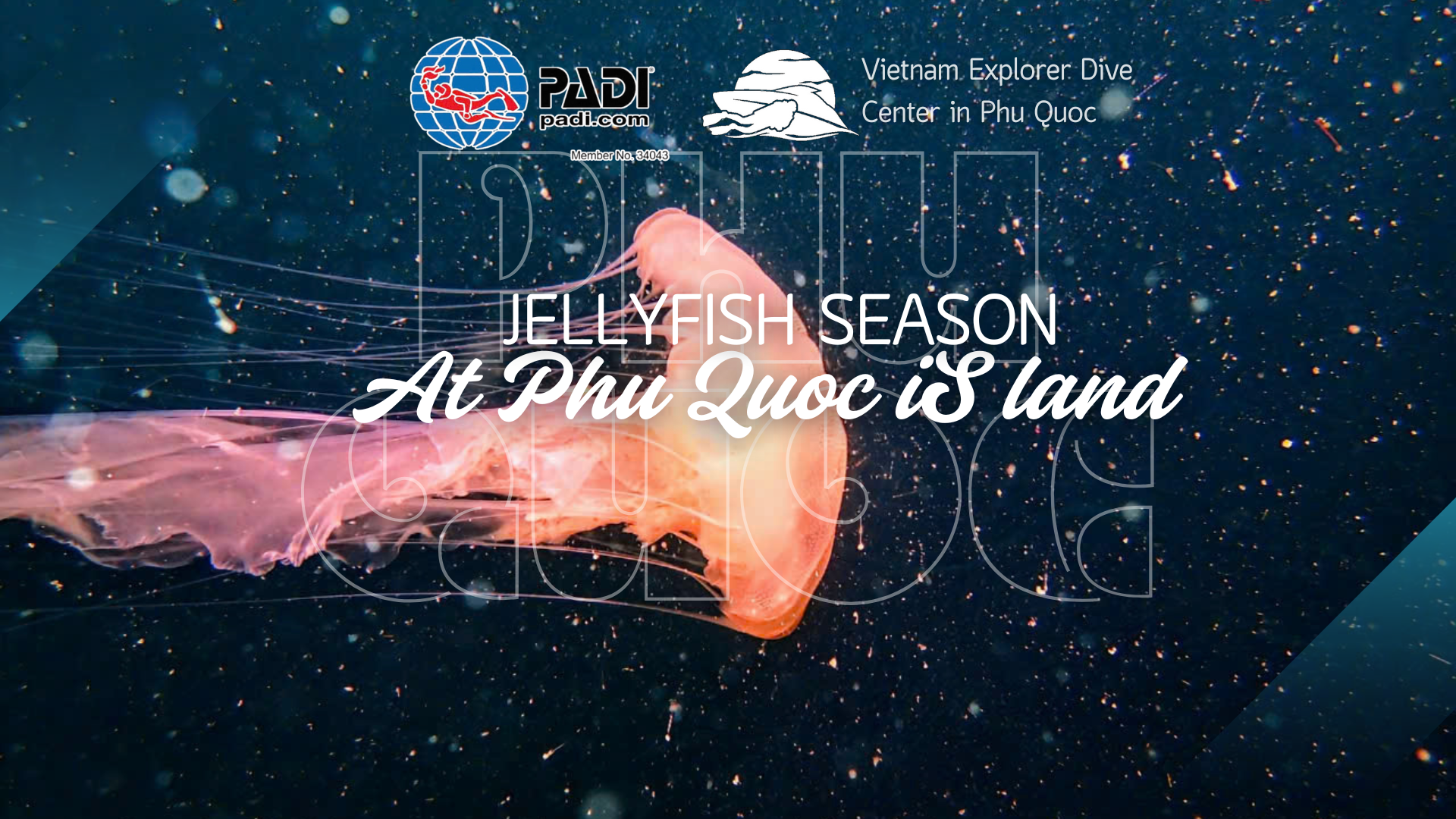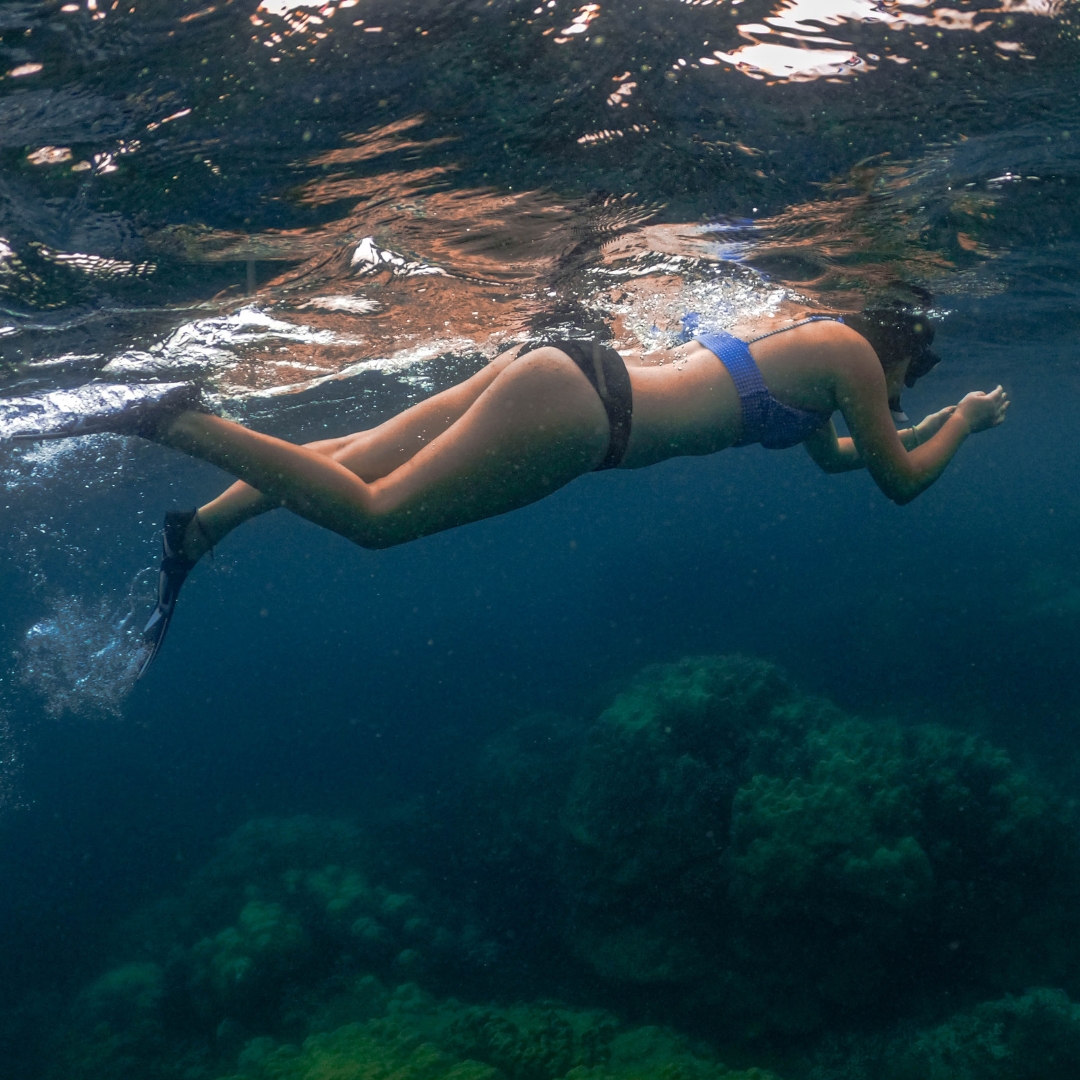
Jellyfish Season In Phu Quoc Starts From Late November To Mid-december, With Its Peak In Early December. While Jellyfish Are Usually Solitary, You May Occasionally Encounter Small Groups In Certain Areas.
In Early Summer (late April To Early May), You’ll See Many Small Jellyfish Floating In The Water, And Sometimes Even Flame Jellyfish. For The Most Accurate, Up-to-date Information, Please Contact Vietnam Explorer Dive Center Via Whatsapp At +84 1695 333 727. During This Period, We Strongly Recommend Wearing Long-sleeve Shirts Or Sun-protective Swimwear.
|
Tourists Participating In Diving Activities At Phu Quoc's Coral Forest
|
Visitors Enjoying A Coral Reef Diving Experience At Phu Quoc Coral Forest
|
|
Professional Snorkeling Tours To Explore Shallow Waters Rich In Coral Growth |
Scuba Diving Tourists In Phu Quoc |
- Moon Jellyfish (Aurelia Aurita)
- Comb Jellyfish (Ctenophora)
- Cauliflower Or Crown Jellyfish (Cephea Cephea Or Linuche Aquila)
- Four-handed Box Jellyfish
- Lion’s Mane Jellyfish (Cyanea Capillata)
- Flame Jellyfish (Pelagia Noctiluca)

When Snorkeling Or Diving, Avoid Exposing Bare Skin To Protect Yourself From Potentially Harmful Marine Creatures - Especially Jellyfish. Wear Protective Clothing Such As Long-sleeve Rash Guards And Swim Leggings To Prevent Direct Contact And To Keep Your Body Warm. Limit Using Sunscreen To Protect Coral Reefs And Avoid Unnecessary Exposure, As Waves Can Wash It Off.
Stay Alert And Observe Your Surroundings, Especially Avoiding Strong Currents Where Jellyfish May Appear Suddenly, Even Within A Few Seconds If You’re Not Paying Attention.

To Enjoy A Fascinating Coral Diving Experience, Proper Preparation And Skills Are Essential.
For Anyone Not Specialized In Marine Biology, Vietnam Explorer Dive Center Hopes The Following Information Will Help You Identify Venomous Jellyfish - Even If You’ve Never Encountered Them Before. Jellyfish Can Release Venom Through Contact With Tentacles Or Tails, So “tentacles” And “tails” Are Key Identifying Features For Dangerous Species.
- Long Tentacles/tails - Significantly Longer Than The Jellyfish’s Bell; Lengths Range From 0.5 M To 2 - 4 M Or More.
- Tentacles/tails Are Thin, Resembling Threads In Water.
- Size Is Not A Reliable Indicator Of Danger: Some Extremely Venomous Jellyfish Are Tiny - No Larger Than A Finger And Almost Invisible Underwater.
In Phu Quoc, Four-handed Box Jellyfish Have Been Recorded In The Southern Part Of The Island. Though Exceedingly Rare, They Are Extremely Venomous.
While Not All Jellyfish Move Actively, Most Are Carried By Ocean Currents And Waves. If You Happen To “run Into” A Cluster, Follow These Instructions From Vietnam Explorer Dive Center:
- Stay Calm And Identify The Current’s Direction, As Jellyfish Drift With It.
- Swim Diagonally Out Of The Main Current, Avoiding Direct Paths That May Intersect Jellyfish Clusters.
- Try To Spot Venomous Jellyfish, Especially Any With Long, Thread-thin Tentacles (like Box Jellyfish). If None Are Spotted, At Worst You Might Experience Mild Itching Later.
Absolutely. Vietnam Explorer Dive Center Continues To Operate Snorkeling And Scuba Tours During Jellyfish Season. However, Participants Must Wear Proper Protective Clothing.
Follow Instructions From Certified Instructors Who Understand The Local Marine Conditions. We Provide Rental Dive Gear And Rash Guards From November To January, When Water Temperatures Drop To Around 23 - 25 °c. Instructors Also Wear Full Wetsuits For Safety.
✅ Opt For Long-sleeve Swimwear Or Full Wetsuits To Stay Warm And Minimize Sunscreen Use While Diving
❌ Avoid Wearing Bikinis

Professional Snorkeling: The Best Choice To See The Beauty Of Coral Reefs
When Enjoying Outdoor Activities, Respecting Nature And Applying Preventive Knowledge Is Key To A Safe And Enjoyable Experience. Prepare Ahead To Fully Enjoy Your Trip Without Worry. Don’t Forget To Include Long-sleeve Sun-protective Swimwear In Your Packing List. If Possible, Use Anti-jellyfish Lotion Along With Reef-safe Sunscreen.
Long-sleeve Swimwear Is A Must According To Vietnam Explorer Dive Center. It Protects Against Uv, Jellyfish, And Keeps Your Body Warm. It Also Helps Avoid Using Sunscreen On Land, Reducing Environmental Impact - Many Sunscreen Ingredients Harm Coral Reefs.
Certain Jellyfish Like Box Jellyfish And Irukandji Can Be Life-threatening, Requiring Urgent Medical Intervention.
- Rinse The Sting Area With Vinegar For At Least 30 Seconds. If Not Available, Use Seawater.
- Remove Any Remaining Tentacles Using Tweezers (avoid Touching Them Directly And Avoid Sand Contamination).
- After Removal, Immerse The Area In Hot Water Between 20 - 45 Minutes (warm, Not Scalding).
- If Hot Water Isn’t Feasible, Apply A Cold Compress, But Do Not Place Ice Directly On The Skin To Avoid Infection.
- If Any Respiratory Distress Occurs, Go To The Nearest Hospital Immediately.
Vietnam Explorer Dive Center Always Carries Vinegar Onboard For Immediate Jellyfish Sting Treatment On Diving Trips.
In Family-friendly Snorkeling Tours, Vietnam Explorer Dive Center Provides Long-sleeve Snorkeling Suits For Children Aged 4 - 6 Years, Weighing 12 - 32 Kg, Ensuring Protection From Jellyfish, Cold Water, And Uv Exposure For A Safe Marine Exploration Experience.
A Padi-certified Center Offering High‑quality, Eco‑friendly, And Safe Coral Snorkeling And Diving Tours.
📍 Located On Phu Quoc Island, Vietnam Or 👉 Dive Map Guide: Vietnam Scuba Dive Site And Dive Map Guide
📧 Info@vietnamexplorerdiving.com | Minhdaodiver@gmail.com
📞 Whatsapp: (+84) 1695 333 727
📞 Hotline: (+84) 395 333 727
See More Hashtags: Jellyfish Species In Phu Quoc, Venomous Jellyfish In Phu Quoc, How To Avoid Jellyfish Stings, Safe Diving During Jellyfish Season, Snorkeling During Jellyfish Season, Flame Jellyfish, Four-handed Box Jellyfish, Anti-jellyfish Long-sleeve Swimwear, First Aid For Jellyfish Stings, Phu Quoc Jellyfish Season, Jellyfish In Phu Quoc, Snorkeling During Jellyfish Season


